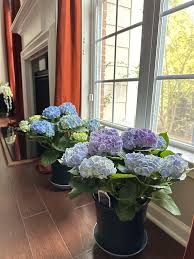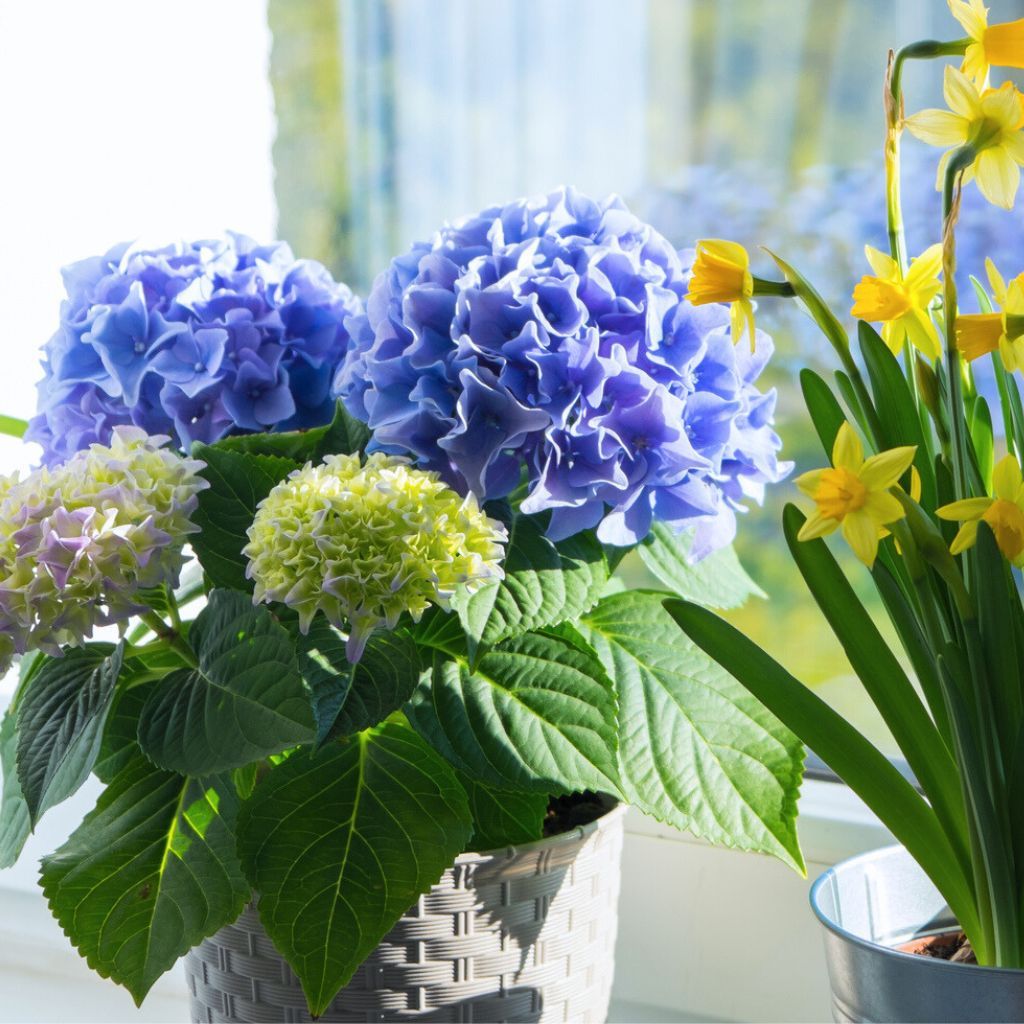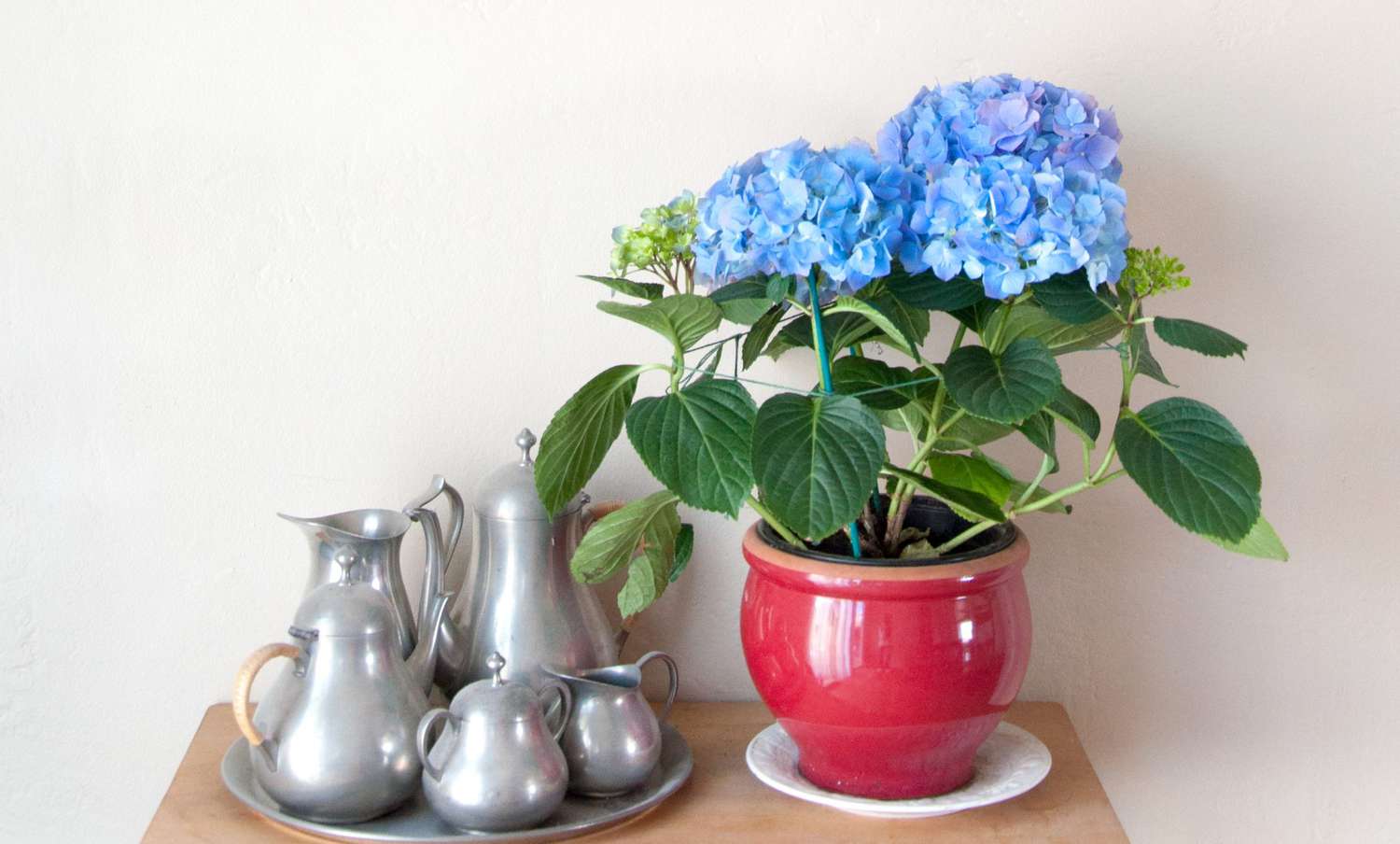Hydrangeas are renowned for their lush, vibrant blooms that range in colors from pastel pinks to deep blues. While they are often seen as outdoor plants, hydrangeas can thrive indoors with proper care. Here’s your comprehensive guide to successfully growing and maintaining hydrangeas indoors.
Can Hydrangea be grown indoors?
Though it is considered an outdoor plant as it blooms best in outdoor. But with proper care and regular maintenance, you can grow them indoors! With proper soil, light adjustment, and environment, you can brighten up your indoors with this beautiful plant species.
Overview
Hydrangeas, native to Asia and the Americas, are adored for their large, showy flower heads and their ability to change flower color based on soil pH. These plants symbolize gratitude, grace, and beauty, making them a cherished addition to indoor spaces. With their ability to brighten any room, hydrangeas are perfect for those looking to add a touch of elegance to their home.

Light Requirements
Hydrangeas prefer bright, indirect light. Place your plant near a window with filtered sunlight, such as an east- or south-facing window. Avoid direct sunlight, which can scorch the leaves and flowers. If the natural light in your home is insufficient, consider using a grow light to provide the plant with the energy it needs to thrive.
Watering Needs
Hydrangeas are thirsty plants and require consistent moisture. Water the plant when the top inch of soil feels dry to the touch. Be careful not to let the soil dry out completely, as this can stress the plant and cause the flowers to wilt. However, overwatering should also be avoided to prevent root rot. Use lukewarm, distilled water if your tap water is high in chlorine, as hydrangeas can be sensitive to it.
Humidity and Temperature
Hydrangeas thrive in moderate humidity and temperatures between 60-70°F (15-21°C). During dry winter months, use a humidifier or place a tray of water with pebbles near the plant to maintain adequate humidity. Keep your hydrangea away from drafts, heating vents, and air conditioners to prevent temperature fluctuations.
Soil and Fertilizer
Use a well-draining, nutrient-rich potting mix for your hydrangea. The soil should retain some moisture without becoming waterlogged. Fertilize your hydrangea every two weeks during the growing season (spring and summer) with a balanced, water-soluble fertilizer. If you want to adjust the flower color, use soil amendments: acidic soil produces blue flowers, while alkaline soil results in pink blooms.

Pruning and Maintenance
Regular pruning helps maintain the health and shape of your hydrangea. Remove spent flowers and any dead or yellowing leaves. During late winter or early spring, prune back the stems to encourage new growth. Be gentle when handling the plant to avoid damaging its delicate blooms.
Common Issues and Solutions
- Wilting Flowers: This often indicates the plant needs more water or is exposed to too much sunlight. Adjust watering and relocate the plant to a spot with filtered light.
- Yellowing Leaves: Can signal overwatering or poor drainage. Ensure the pot has drainage holes and water only when needed.
- Pests: Common pests include aphids and spider mites. Use insecticidal soap or neem oil to control infestations. Regularly inspect the plant to catch issues early.
- No Flowers: Lack of blooms may result from insufficient light or improper pruning. Ensure the plant receives adequate light and avoid cutting back stems that may bloom.
Propagation Tips
Hydrangeas can be propagated through stem cuttings. Choose a healthy stem with at least two nodes and remove the lower leaves. Dip the cut end in rooting hormone and plant it in a pot with moist potting mix. Cover the pot with a plastic bag to create a greenhouse effect, ensuring high humidity. Keep the cutting in a bright, warm spot and water as needed until roots form.
Benefits of Growing Hydrangeas Indoors
- Aesthetic Appeal: Hydrangeas add a burst of color and sophistication to any indoor space.
- Air Purification: Like many plants, they improve indoor air quality by filtering toxins.
- Mood Booster: Caring for hydrangeas and enjoying their beauty can reduce stress and enhance mental well-being.
- Versatility: Their varied colors and compact size make them suitable for a range of interior design styles.
Conclusion
Hydrangeas are stunning plants that can thrive indoors with the right care. By providing them with proper light, water, and attention, you can enjoy their breathtaking blooms year-round. These plants are more than just decorative pieces—they bring life, color, and a sense of tranquility to your home. Follow this guide, and your hydrangea will flourish indoors, becoming a cherished part of your indoor garden.
Happy gardening!

